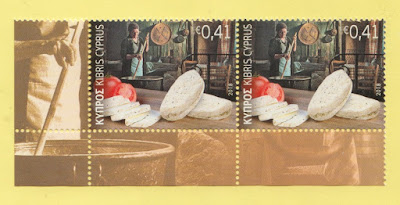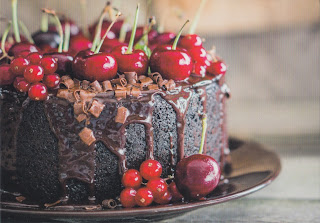Minisheet
Indulge your sweet tooth and explore the delicious origins of five famous Canadian desserts with this souvenir sheet, part of our Sweet Canada issue. This fun and colourful collectible is a great gift for cooking and baking enthusiasts, as well as stamp collectors of all ages.
The featured desserts are Nanaimo bars, Saskatoon berry pie butter tarts, tarte au sucre (sugar pie) and blueberry grunt. On the front of the souvenir sheet, the uniquely shaped stamps are arranged on a recipe card background.
Rich and chocolatey Nanaimo bars have been associated with their namesake Vancouver Island city since the no-bake recipe first appeared there in the 1950’s.
Saskatoon berry pie, notable for the unique apple and almond taste of its fruit, is a true Canadian original. High in fibre, protein and antioxidants, the berries were once a staple of Indigenous people and Prairie settlers.
Butter tarts have become an object of cultural pride in some Canadian communities, with several Ontario towns boasting the best bakers of these sweet pastries.
An indispensable offering at Quebec patisseries, tarte au sucre has centuries-old European origins that were adopted by early arrivals to New France.
Named for the noise it makes while cooking, blueberry grunt has been enjoyed on Canada’s East Coast for generations.
- ISSUE DATE: April 17, 2019
- STAMP DESIGNER: Roy White, Liz Wurzinger, Subplot Design Inc.
- ILLUSTRATION: Mary Ellen Johnson
- STAMP VALUE: PermanentTM (domestic rate)
- QUANTITY PRODUCTS: 80,000
- DIMENSIONS: 127 mm x 90 mm
Booklet
We’re serving up huge helpings of Canadian culinary history with our Sweet Canada stamp issue. This booklet of 10 PermanentTM domestic stamps dishes up the origins of five delicious Canadians desserts and takes you on a tasty trip from coast to coast.
The featured desserts are Nanaimo bars, Saskatoon berry pie butter tarts, tarte au sucre (sugar pie) and blueberry grunt. The fun-shaped stamps are arranged on a recipe card background. The back of the booklet also features a recipe box motif.
Rich and chocolatey Nanaimo bars have been associated with their namesake Vancouver Island city since the no-bake recipe first appeared there in the 1950’s.
Saskatoon berry pie, notable for the unique apple and almond taste of its fruit, is a true Canadian original. High in fibre, protein and antioxidants, the berries were once a staple of Indigenous people and Prairie settlers.
Butter tarts have become an object of cultural pride in some Canadian communities, with several Ontario towns boasting the best bakers of these sweet pastries.
An indispensable offering at Quebec patisseries, tarte au sucre has centuries-old European origins that were adopted by early arrivals to New France.
Named for the noise it makes while cooking, blueberry grunt has been enjoyed on Canada’s East Coast for generations.
- ISSUE DATE: April 17, 2019
- STAMP DESIGNER: Roy White, Liz Wurzinger, Subplot Design Inc.
- ILLUSTRATION: Mary Ellen Johnson
- STAMP VALUE: PermanentTM (domestic rate)
- QUANTITY PRODUCTS: 200,000
DIMENSIONS:
- Sugar Pie: 34.4 mm x 30.5 mm
- Butter tart: 32 mm x 29.4 mm
- Saskatoon Berry Pie: 40.9 mm x 30.9 mm
- Nanaimo Bar: 35.1 mm x 32 mm
- Blueberry Grunt: 43.1 mm x 27.9 mm






























